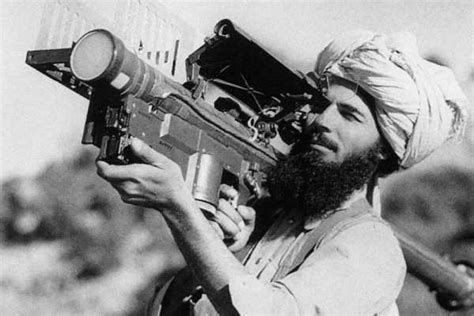
NATO and its media supporters love wunderwaffen—‘wonder weapons’ that were promised by Herr Hitler to the German people even as Berlin crumbled around the Führerbunker. Challengers, Abrams, Leopards, HIMARS, and F-16s have had their turn as the ‘game-changer’ that will see off the Russians. Stingers entered the ‘game-changer’ phase last summer, with media asking, ‘will Stinger missiles be Putin army’s nemesis?’ Raytheon called up retired employees to manufacture Stingers.
A graphic on the fate of the vaunted German Leopards. Left, by Ukrainians; right, by Russian MFA

Stingers in Afghanistan
It is received wisdom in the U.S. Army and intelligence services that Stingers supplied to the Afghan mujahidin defeated the Red Army. This is the official CIA version:
The guerrillas were now able to challenge Soviet control of the airspace above the battlefield. Mujahideen morale soared as Soviet losses mounted. By 1989, the Soviet Union had concluded that the fight was not worth the cost and withdrew from the country.
CIA website
Firstly, the Stinger was introduced to the Afghan battlefield in late 1986. The first recorded use was on 26 September 1986 at Jalalabad airport. Eight Mi-24D ‘Hind’ helicopters descended on the airport. Several missiles were launched; three helicopters were struck. The shootdown was confirmed by a KH-11 spy satellite during its overflight. Langley cabled Milt Bearden, CIA Chief of Station Islamabad, ‘satellite imagery confirms three kills at Jalalabad Airport as reported [by CIA Islamabad]. Please pass our congratulations for a job well done.’ The White House was ecstatic. CIA, which had opposed the Stinger program lest missiles enter the armaments black market and be used against airliners, embraced the program (see Coll, Ghost Wars, 149).
Secondly, Mikhail Gorbachev, who came to power in March 1985, opposed the war (for reasons that need not detain us). By October 1985, he had secured Politburo approval for withdrawal. The thornier problem—one that did not trouble Trump or Biden—was the imperative ‘to secure some sort of stability in Afghanistan before calling the troops home.’ (Kalinovsky, A Long Goodbye, 74). Gorbachev had diplomatic priorities to consider, like the loss of Soviet prestige due to a hasty withdrawal, and risk of collapse of Mohammed Najibullah’s government in Kabul. Najibullah survived from the Soviet departure in Feb. 1989 until April 1992, when under the Peshawar Accord, a mujahidin coalition took control. It is worth noting that Ashraf Ghani and his army could not hold on until the Americans had left. Hence the USSR’s ‘long goodbye,’ instead of an exit in 1986 or early 1987.
Stingers forced the Soviets to change tactics. A Hind’s armaments may include a Yak B-12.7 mm four-barrel gatling machine gun in the ‘chin’ of the turret; one B8V20-A rocket pod beneath each wing, each holding twenty 80 mm, model S-8 rockets; one UPK-23-250 twin barrel autocannon; and two 9K114 Shturm anti-tank guided missiles (ATGM) per wing. However, since the Muj had few armored vehicles, ATGM often launched thermobaric warheads. In short, the Hind was deadly—at close range. Being forced to fly at higher altitudes to avoid Stingers rendered the ‘hunter-killer’ helicopters less effective. One compensation that allowed Hinds to fly closer to the surface was the introduction of gunners on port and starboard wndows, each manning a 7.62 mm Degtyaryov light machine gun to spray perceived threats. Electronic and other counter measures were implemented, too. Muj did not destroy as many Soviet aircraft as claimed, but this is a ‘contentious’ debate.
You must be logged in to post a comment.